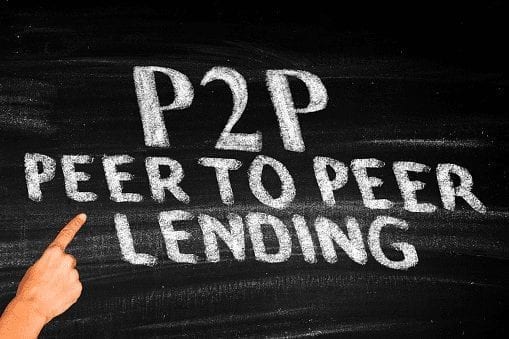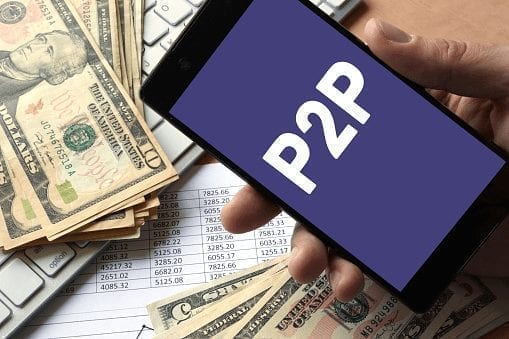Peer to peer platforms are growing in popularity and are accounting to high percentages of loans to individuals in many countries. Indeed the internet revolution has made it possible for people to access loans right at their mobile devices. With an unbanked population of 95 million people peer to peer lending has enabled people to access loans or credit. TBH, for some it is a game changer.
By December 2018, the total loans stood at IDR 22.67 trillion or (US$1.62 million). As you can see, this is a significant figure that has attracted a lot of investors and borrowers as well.
Despite the convenience that comes with these loans, there are inherent risks to borrowers and lenders. Keep reading as we expound on the risk categories.

Bankruptcy Risk
Investors have a high risk of bankruptcy if borrowers default. These loans are in their infancy, and there’s little, or no information of how the investor funds are handled in the business becomes insolvent
As an investor, you can reduce this risk by putting your money in different platforms to spread the risk so that if one platform dissolves, you’ll have some backup.

Regulatory bodies
Peer to peer lending may be available in many countries since the platforms are largely digital bases. As such, you’ll find that countries operate differently and are governed by regulatory bodies and economic policies.
In Indonesia, the platforms are regulated by the laws on the land. The OK regulation stipulates the policies for this technology-based company which protects the investors and the borrowers.
The risk of default
With all loans, there is always the possibility of a default. This means that, for example, the borrower can no longer pay his installments due to over-indebtedness. The consequences are sometimes lengthy collection procedures with an unknown outcome.
To limit risk, you should find out as much as possible about the loan or borrower in advance when making manual investments. Depending on the platform, you may be provided with very extensive information on the type of loan, background information on the borrower, and many other details. Define certain exclusion criteria for you, for instance, age limitation and set it in the terms and conditions.
Risk of fraud
The risk of fraud is possible on both the borrower and the investor. This means that, for example, a borrower took out a loan and never intended to repay it.
On the platform side, it would theoretically also be conceivable for a new platform to be founded, to collect this investor’s money diligently, and suddenly no longer exist tomorrow.
For this reason, it is only necessary to invest in platforms that have already established themselves on the market. On the borrower side, the buyback guarantee is the means of choice for hedging.
Government interventions
Another risk is if the government puts restrictions on peer to peer lending platforms. For example, tax regulations could be introduced, both on the investor and borrower side. Also, you may be required to pay license fees before operating a peer to peer lending platform. There is nothing much you can do since rules are there to be obeyed or otherwise, you’d risk closing shop. However, you can research before introducing your platform to any country. Whether it is Peru, Thailand, Japan, South Korea or Scotland, there is always political risk when it comes to money and banking.
IT & security risks
Let’s face it; internet solutions have numerous risks when it comes to IT and the issue of passwords being passed to the wrong hands. You may need to invest in superior firewall software or anti-virus to protect your investment and borrower’s privacy.
As an investor, you only have the option of distributing your money on different platforms and thus reducing the risk. Think of it as trying different search engines to hide your data by spreading it across Google, Yahoo, Ecosia, Yandex, and DuckDuckGo.
The risk of liquidity
Loans cannot be sold early on platforms without a secondary market. In the case of real estate loans, for example, the terms are up to 60 months. If you have to get your money here early, you have bad cards.
For this reason, you should first think about whether the money invested is really not needed until the end of the term. Only then should you invest the unnecessary capital.
Diversification also plays an important role again. Use the options available to invest in both short-term and long-term loans.
Valuation risk
If a loan is requested via the peer to peer lending platform, you may need to subject the borrower to a credit check. To protect yourself from this, you should only invest in loans that also offer a buyback guarantee. Furthermore, it is advisable to split your investments between several platforms and credit providers.
Conclusion
Peer to peer loans is a high-risk form of investment. You should keep this in mind when you invest in this asset class. If you adhere to certain rules, many risks can be significantly reduced or completely eliminated.
There are over 250 fintech firms in Indonesia and these are responsible for the growth of peer to peer lending. On the same note, the regulator keeps on exploring new avenues for growth.
FAQ
Does the government add to the risk of peer to peer lending?
Another risk is if the government puts restrictions on peer to peer lending platforms. For example, tax regulations could be introduced, both on the investor and borrower side. Also, you may be required to pay license fees before operating a peer to peer lending platform. There is nothing much you can do since rules are there to be obeyed or otherwise, you’d risk closing shop. However, you can research before introducing your platform to any country.
Additional Resources:


